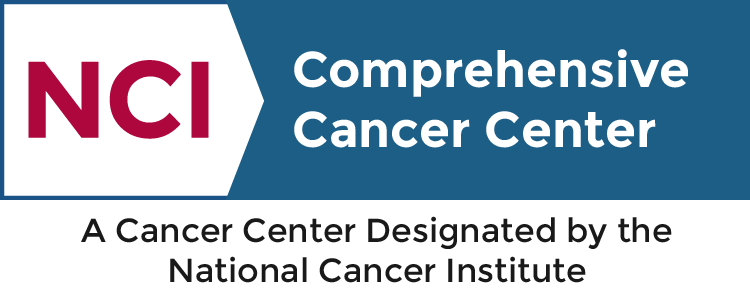Melanoma is the deadliest form of skin cancer, despite only accounting for 1% of all skin cancers. Fortunately, advances in cancer treatment have contributed to declines in melanoma mortality rates by 5% per year in adults younger than 50 years and 3% in adults over 50 years from 2011 to 2020.
To learn more about current melanoma treatment and advances in treatment, we talked with SCI member Allison Betof Warner, MD, PhD, leader of Stanford’s Melanoma & Cutaneous Oncology Clinical Research Group.
Stage 4 melanoma survival rate has drastically improved with immunotherapy
In the past, the survival outcomes after a stage 4 melanoma diagnosis used to be measured in months, but now more than half of patients live for five years or more after being diagnosed. This is because the standard of care has shifted to immunotherapy, which is exceptionally effective for melanoma in part due to the high tumor mutation burden caused by UV damage. More mutations make it easier for the body to recognize the tumor as foreign and thus make melanoma one of the most immune-responsive cancers.
“The trials have exploded in this space as we’ve found new treatment modalities.”
However, the majority of patients still don’t have durable responses to immunotherapy. This is true even for cutaneous melanoma, but outcomes tend to be poorer for ocular and mucosal melanoma patients who have lower tumor mutation burdens due to lack of UV damage. Betof mentions this is a space that melanoma researchers are excited to tackle.
TIL therapy offers promising results for treating melanoma
Tumor-infiltrating lymphocyte (TIL) therapy is a cell-based therapy where immune cells are surgically removed from the patient’s tumor, grown and expanded, and then given back to the patient by IV to kill tumor cells. Betof has been a leader in developing this technology and a key player in TIL therapy clinical trials.
While TIL therapy has been around since the 1980s, researchers have only recently learned how to make TIL therapy quickly and effectively so that now almost 97% of patients make cells within three weeks of surgery. Previously, less than half of the patients who underwent the surgery would be able to make cells, and growing them would take a very long time.
The first major commercial TIL therapy paper, an update was published last year, showed that 31% of patients responded to TIL therapy, and more than half who responded saw their tumors continue to respond a year after this one-time treatment. Further, a second study in the New England Journal of Medicine compared a homegrown TIL therapy with ipilimumab, another immunotherapy drug often used for PD-1-refractory melanoma, and found that TIL therapy had superior outcomes and longer-term quality of life.
“We haven’t seen this degree of efficacy in any other treatment for PD-1-refractory melanoma.”
TIL therapy was recently approved for cancer treatment in The Netherlands and is currently under review by the FDA. Researchers are hoping the therapy will be approved in the U.S. by the end of the year.
Future treatments will need to address less immune-responsive tumors
An important area of research concerns treating less immune-responsive tumors. Betof points to tebentafusp, an immunotherapy drug approved in 2022, which is the first drug ever to show a survival benefit for ocular melanoma, a rare but exceptionally deadly cancer. However, it only works for a subset of patients who have a specific immune system, the HLA-A*0201 type, so research is underway to either make tebentafusp and other drugs like it agnostic to immune system type or expand it to other immune types.
Betof observes that data has indicated tebentafusp may work for other types of melanoma, including in combination with other therapies to treat PD-1-refractory melanoma. This can prove vital for refractory patients who aren’t eligible for TIL therapy or have already progressed on TIL therapy. Clinical trials are currently testing this medication in this difficult-to-treat population.
Finding innovative ways to boost the immune system to improve treatment response is another area of important research. Betof references Stanford melanoma surgeon Amanda Kirane, MD, as doing a lot of work on using agents that could be injected into tumors to release an antigen that stimulates the immune system and potentially makes the tumor more responsive to immunotherapy.
Further advances will require an interdisciplinary approach
Betof speaks with excitement about how the Stanford Melanoma & Cutaneous Oncology Clinical Research Group unites the expertise of several different departments across Stanford to treat patients, which include groups in cellular therapy, solid tumor malignancies, and bone marrow transplant and hematology services.
“It’s important to capitalize on what Stanford does exceptionally well, and we are known for cellular therapy, which is still really new in solid tumors.”
Betof notes that “the sky’s the limit” when collaborating with Stanford’s cellular therapy experts on advancing cancer treatment. She references a clinical trial that she led during her time at Memorial Sloan Kettering Cancer Center and is launching at Stanford that looks at genetically modifying TIL cells to create a more durable response. Betof says the main modification they’re looking at is the deletion of the PD-1 gene, which will negate the need to use immunotherapy on top of cell therapy. This trial is in phase 1 safety analysis and is being studied in both melanoma and lung cancer.
“Like how immunotherapy started as a melanoma treatment and expanded to treating other cancers, I expect that TIL therapy, which has already been studied in cervical, lung, and head and neck cancers, will become effective treatments for other cancers.”



